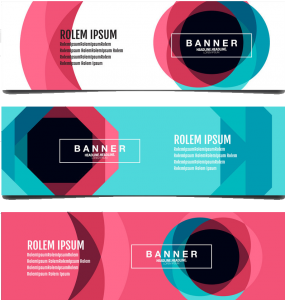So, you’re finally ready to monetize that website you’ve worked so hard to build — or maybe you’ve already joined an ad network but aren’t exactly thrilled with the results. Perhaps you’re even thinking about combining a few platforms to squeeze out better performance. Whatever the case, you’ve probably noticed one thing: there are way too many options out there, and figuring out which one to trust can feel like navigating a maze blindfolded.
To make matters trickier, the ad tech industry comes with its own set of confusing terms — programmatic buying, real-time bidding, CPM vs CPC, native vs display ads, and the list goes on. Add to that the countless platforms all promising “higher returns” and “premium advertisers,” and it’s easy to feel overwhelmed. But here’s the good news — it doesn’t have to be complicated once you know what to look for.
The key to choosing the right platform lies in understanding ad network features — what each one offers, how they differ, and how those features align with your website’s goals. For example, some ad networks are known for high fill rates and real-time optimization, while others shine in specific niches like gaming, eCommerce, or mobile traffic. Certain ad network features even allow you to control ad placements, block unwanted content, or access detailed analytics to track every click and impression.
When you break it down, choosing a good ad network is less about chasing the biggest name and more about matching the right tools to your website’s unique audience and content style. Once you understand the basics — like payment models, targeting capabilities, and ad formats — you’ll be able to make smarter decisions that actually boost your revenue instead of cutting into it.
So before you rush to sign that contract, take a step back and look deeper. Explore the ad network features that matter most to your niche, your audience, and your growth goals. Because when it comes to monetization, the difference between average results and exceptional earnings often lies in the details.
Table of Contents
ToggleTop Ad Network Features That Matter

#1. Size of the Advertiser Network: Why Bigger Can Mean Better
When it comes to evaluating ad network features, one of the first things you should pay attention to is the size of the advertiser network. Simply put, the more advertisers a network has, the higher your chances of earning better revenue. For instance, an ad network with 10,000 active advertisers will naturally have more opportunities and campaigns running than one with just 1,000. This wider reach gives the network more flexibility in matching the right ads to your website — and that means better results for you.
Here’s why size truly matters. A larger pool of advertisers gives the network a richer ad inventory, allowing for smarter contextual targeting — that is, showing ads that actually align with your website’s content and audience interests. When users see ads that feel relevant, they’re more likely to engage, click, and even convert. This leads to higher CTR (Click-Through Rates) and, ultimately, more income for you as a publisher.
Another overlooked advantage of this ad network feature is geographic diversity. With advertisers spread across different countries and industries, your website’s ad slots are far less likely to go unsold. Instead of displaying generic or filler ads, your visitors will see targeted promotions from brands that align with their location and interests — keeping your site looking professional and your revenue consistent.
Finally, if the network operates on a bidding model, such as CPM or CPC, having more advertisers competing for your ad space directly increases the payout. More bidders mean higher bids — and higher bids mean more money in your pocket.
However, it’s worth noting that size isn’t everything. A big network with poor optimization or irrelevant targeting can still underperform. That’s why while size is an important factor, it should be considered alongside other ad network features like ad quality, fraud prevention, and transparency. A truly powerful ad network is one that combines a vast pool of advertisers with smart technology and solid support — the kind that helps your website grow, not just fill space.
#2. Quality of Ads in the Network: Protecting Your Brand and Maximizing Trust
When it comes to choosing the right monetization partner, one of the most overlooked ad network features is ad quality. Many publishers make the mistake of focusing only on revenue potential without considering the kind of ads that appear on their website. But here’s the truth — your audience doesn’t differentiate between your content and the ads displayed beside it. To them, everything that appears on your site carries your implicit approval.
Think about it — if you run a fitness or wellness blog that promotes healthy living and trustworthy advice, and suddenly, an ad pops up promising “instant six-pack abs in three days” or “miracle weight-loss pills,” it completely undermines your credibility. It’s not just a bad user experience; it’s a direct hit to your brand’s trustworthiness. Even if those ads generate clicks or short-term revenue, the long-term damage to your reputation can far outweigh the profit.
That’s why quality control is such a critical ad network feature. A professional, well-managed ad network filters out misleading, spammy, or offensive content before it ever reaches your audience. The best networks invest heavily in ad review systems and fraud detection tools to ensure that every ad aligns with brand safety standards. This protects both publishers and users — keeping the browsing experience clean, relevant, and engaging.
Beyond brand safety, high-quality ads also perform better. People are naturally more inclined to click on ads that look professional, match their interests, and feel credible. Low-quality ads, on the other hand, not only reduce CTR (Click-Through Rate) but can also make users leave your website faster, increasing your bounce rate.
So, when evaluating ad network features, don’t just ask how much you’ll earn per click — ask what kind of ads will appear on your site. Go for networks that give you control over ad categories, allow manual blocking of unwanted content, and maintain transparency in their advertiser partnerships. Because at the end of the day, protecting your audience’s trust is just as important as growing your revenue — and the right ad network will help you do both.
#3. Variety in Ad Formats: Finding What Truly Works for Your Website

One of the most powerful ad network features that directly affects your earning potential is the variety of ad formats available. In digital advertising, there’s no such thing as a one-size-fits-all approach. What performs exceptionally well on one website might completely flop on another. Your audience, niche, content layout, and even device preferences all influence how different ads perform.
Modern ad networks understand this, which is why they offer a range of formats — from traditional IAB display units and text ads to more dynamic options like video ads, rich media, interstitials, in-text ads, native ads, pop-unders, and even custom proprietary formats exclusive to their platform. The broader the mix, the more flexibility you have to experiment and identify what drives the most engagement — and ultimately, the most revenue.
A strong ad network feature is the ability to test multiple ad formats without compromising your website’s design or user experience. For example, you might find that native ads blend more naturally with your blog content, while banner ads perform better on your homepage or sidebar. Video ads could work wonders on pages with multimedia content but might be intrusive on text-heavy articles. The point is — you’ll never know what works best until you experiment with different placements and formats.
However, there’s a fine balance to strike. Flooding your site with too many ad types — like mixing autoplay video ads, banners, and pop-ups all at once — can do more harm than good. It not only slows down your page load time but also frustrates visitors and drives them away. That’s why it’s crucial to choose an ad network that allows you to customize, monitor, and limit the number of ad types displayed at any given time.
In short, go for ad network features that give you creative control. The best networks make it easy to test, compare, and optimize various ad formats while maintaining a clean, user-friendly layout. When your ads enhance — rather than disrupt — your content, you build trust, retain traffic, and watch your revenue steadily climb.
#4. Compensation & Payment Terms: Understanding How Ad Networks Pay You

When it comes to making money from your website, one of the most crucial ad network features you should look at is how you’ll actually get paid. Every ad network has its own compensation model — and understanding these models will help you choose the one that best fits your content, traffic, and audience behavior. After all, the goal isn’t just to display ads — it’s to earn consistently from them
Let’s break down the most common payment models used by ad network features today:
#1. CPC (Cost Per Click): You earn money every time someone clicks an ad on your site. This model rewards engagement and is ideal if your visitors are active and curious clickers.
#2. CPM (Cost Per Mille): You get paid for every 1,000 ad impressions your site generates, regardless of clicks. It’s a great option if you have high traffic but lower engagement levels.
#3. CPV (Cost Per View): This model focuses on video content — you earn whenever a visitor views an advertiser’s video. It’s commonly used on media-heavy sites or video platforms.
#4. CPA (Cost Per Action): You get paid only when a user performs a specific action, like filling out a form, downloading an app, or making a purchase. It’s more performance-driven but can lead to higher payouts.
#5. Fixed Cost: In this setup, advertisers pay a set fee for ad placement over a fixed period, regardless of how the ads perform. This is predictable but limits upside potential if your traffic suddenly grows.
The truth is, no single model works best for everyone. The smartest approach is to experiment. Test different models and compare the results — which one brings in higher revenue? Which aligns better with your audience’s behavior? The advantage of working with a versatile ad network is that you can switch between models seamlessly or even run them side by side.
Another essential ad network feature to understand is payment terms. Networks typically operate on Net 10, Net 15, Net 30, or Net 60 terms. That means you’ll receive your earnings 10, 15, 30, or 60 days after the month ends, depending on the network’s policy. A longer payment window doesn’t necessarily indicate a problem — sometimes networks wait for advertisers to clear their dues before paying publishers.
That said, always do your homework before signing up. Reach out to current publishers using the platform and ask the right questions:
Do they get paid on time?
Are there big revenue fluctuations?
Does the network provide transparent earnings reports?
Are payments consistent and reliable?
When you combine smart payment models with reliable payout systems, you build a steady foundation for long-term growth. The best ad networks don’t just help you earn — they make sure you’re paid fairly, on time, and with full transparency.
FAQs

#1. What is an ad network?

An ad network is a platform that connects advertisers (brands or businesses that want to promote their products) with publishers (website owners or app developers who want to earn money by displaying ads). In simple terms, it’s the middleman that helps advertisers find ad space and helps publishers fill their inventory with relevant ads. Ad networks operate mainly in the digital media and online advertising space, allowing ads to reach the right audience at the right time.
#2. What is the role of an ad network?
The role of an ad network goes beyond just matching ads to websites. A good network helps publishers monetize their traffic, manage ad placements efficiently, and optimize yield—that is, ensure they earn the maximum possible revenue from every impression or click.
Ad networks also provide ad servers and tools for campaign management, tracking, and performance reporting. For advertisers, they simplify the process of buying ad space, targeting specific audiences, and measuring results, all from one platform.
#3. How does an ad network make money?
Ad networks typically make money by taking a percentage of the ad revenue generated from the campaigns they run. Another common method is by marking up the inventory—buying ad space from publishers at a lower rate and selling it to advertisers at a higher price.
On the advertiser’s side, most networks include a campaign panel or dashboard where advertisers can monitor and manage their campaigns in real time—tracking impressions, clicks, conversions, and overall performance.
In essence, ad networks create a win-win ecosystem: advertisers get exposure, publishers earn revenue, and users see more relevant ads.
Conclusion
Choosing the right ad network is more than just a revenue decision — it’s a long-term strategy for sustainable website growth. The best ad network isn’t necessarily the biggest or most popular; it’s the one that aligns with your content, audience, and goals. By understanding the key ad network features—from the size of the advertiser pool and ad quality to payment terms and technology—you can make smarter choices that boost your earnings without compromising user experience.
If you’re serious about maximizing your ad revenue, don’t just rely on one platform. Test, compare, and refine. High-performing global ad networks like AdsTargets offer flexible ad formats, transparent payouts, and real-time tracking tools that make monetization seamless and rewarding.
So, here’s the call to action — run a small campaign, test AdsTargets, and compare the results with your current network. You might just discover a better, more profitable way to grow your website income. And if you do, share your experience — your feedback could guide others on the same journey toward smarter, higher-paying digital advertising.








